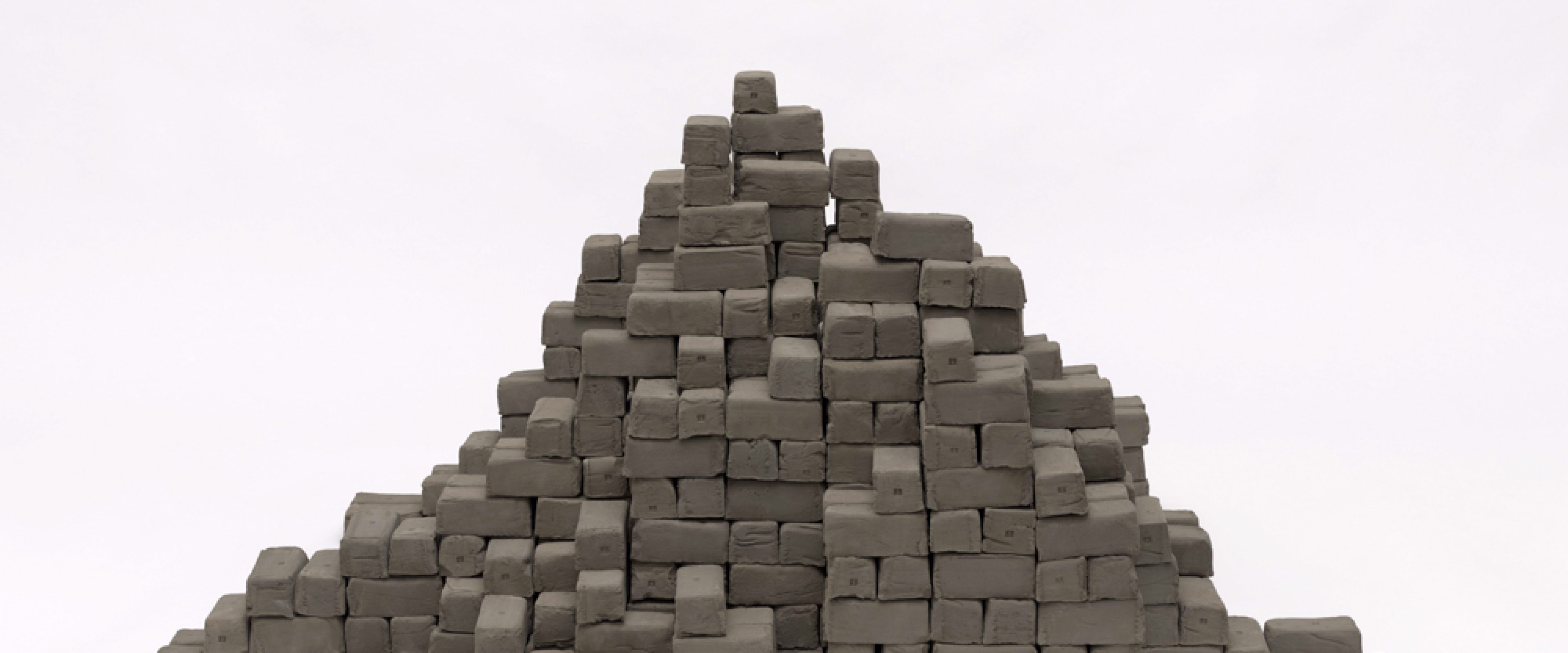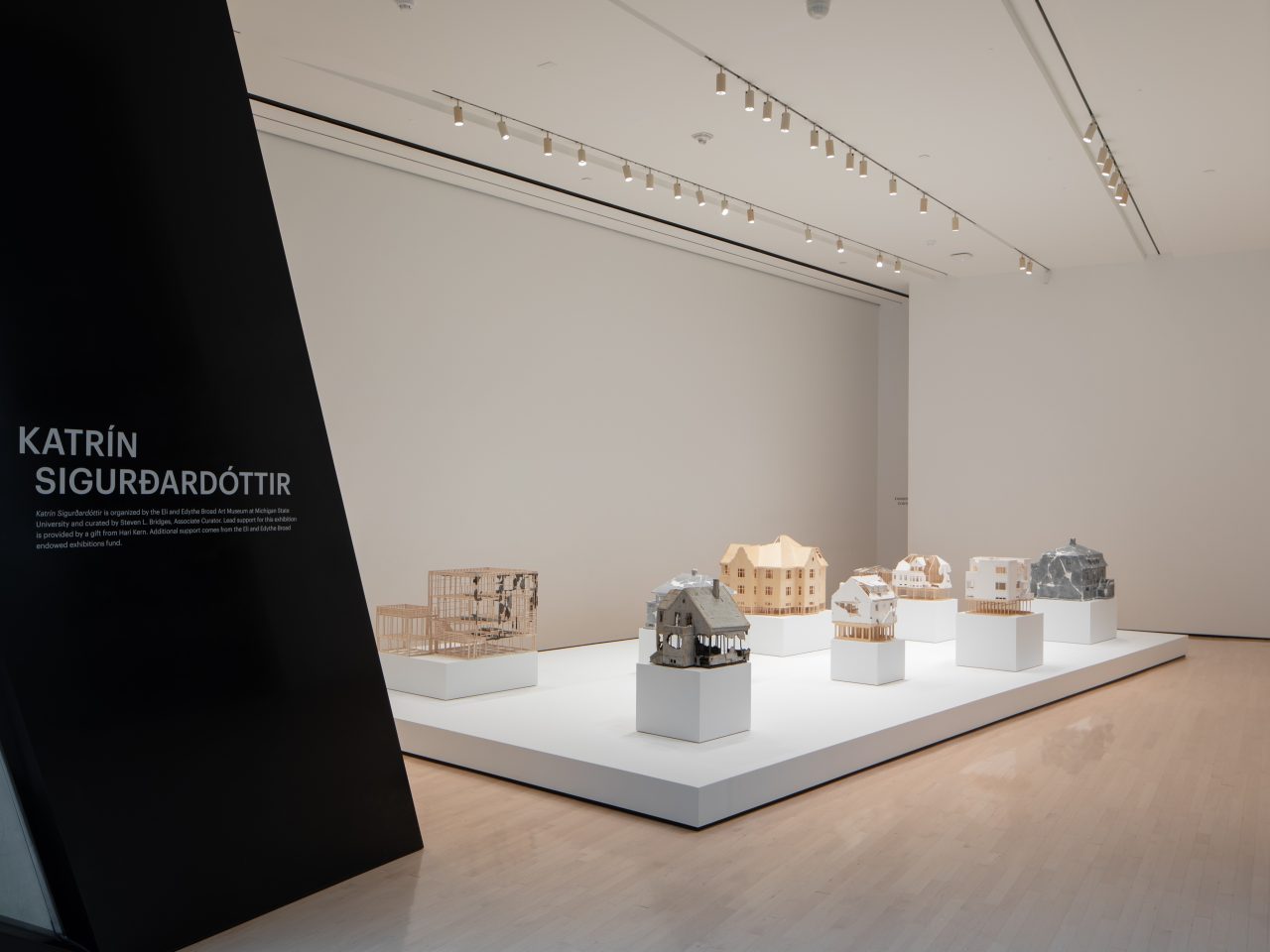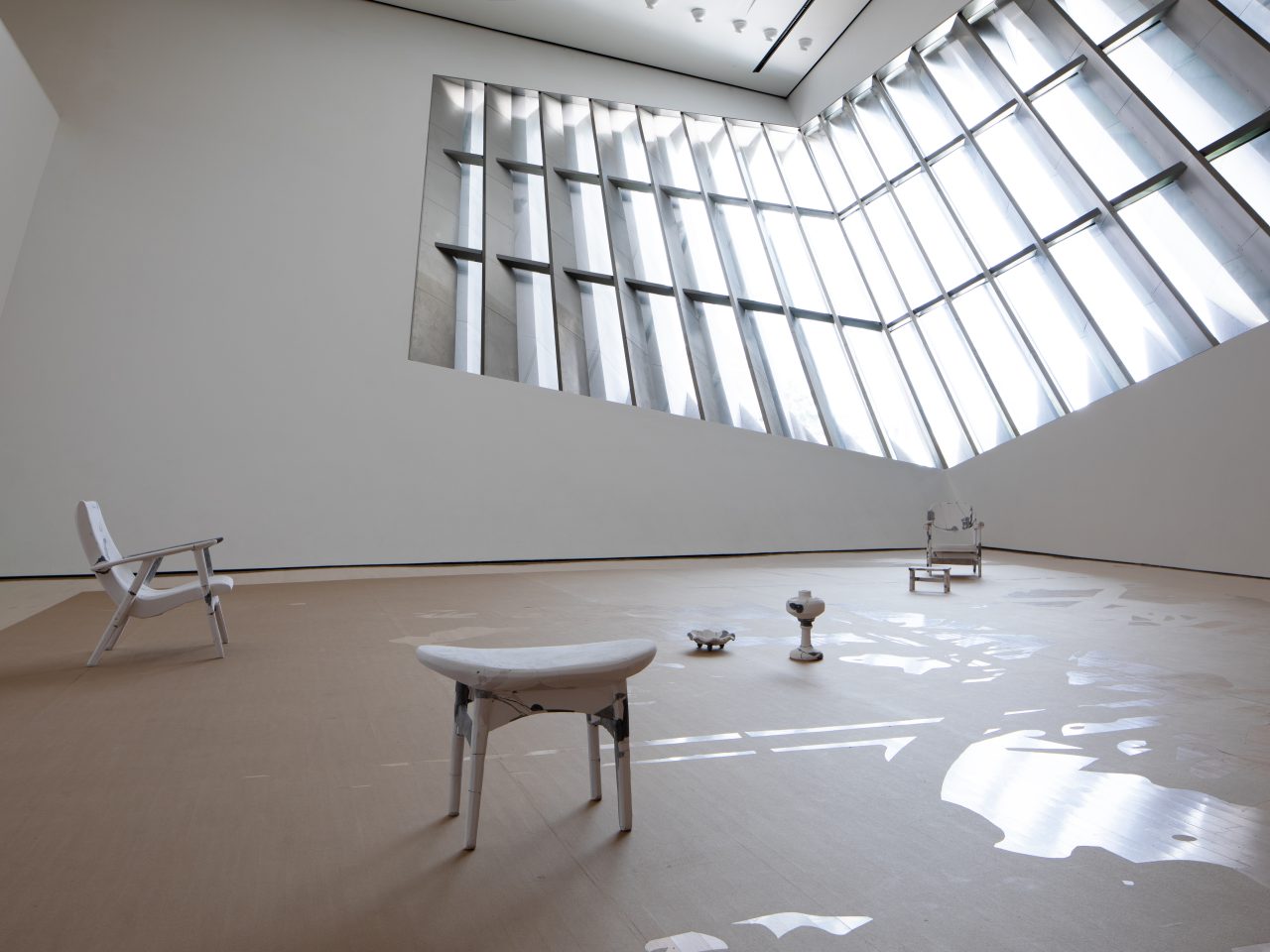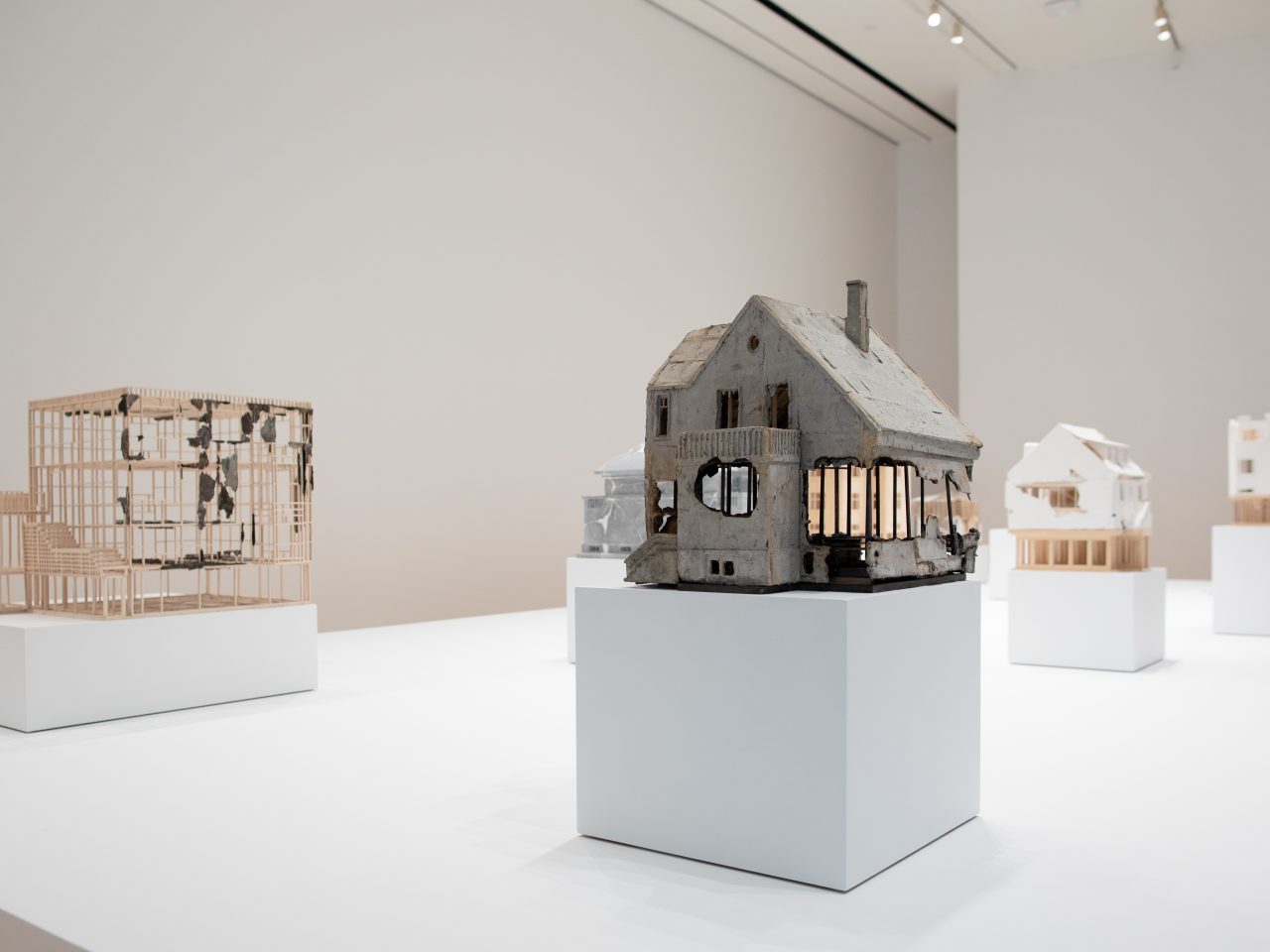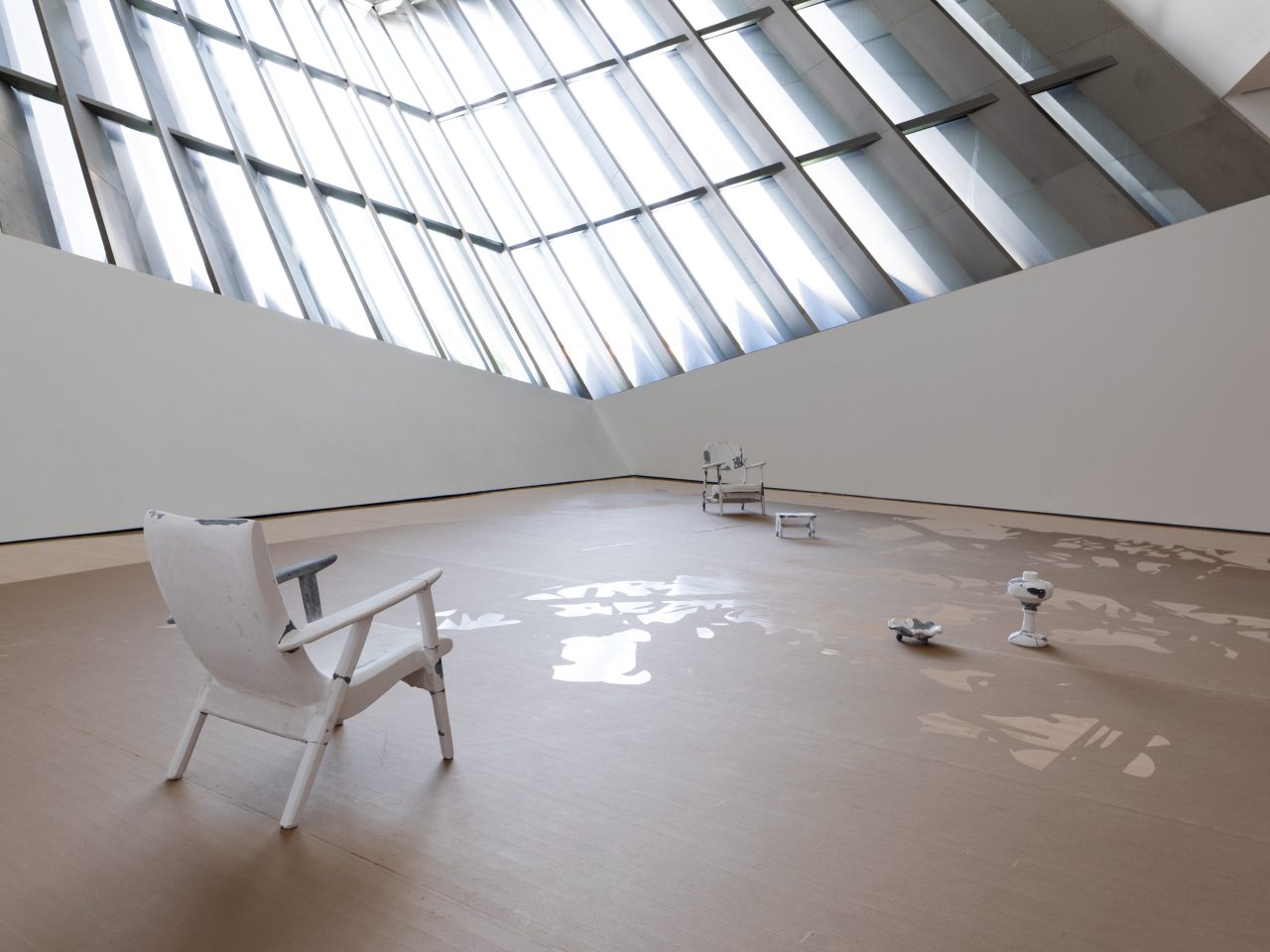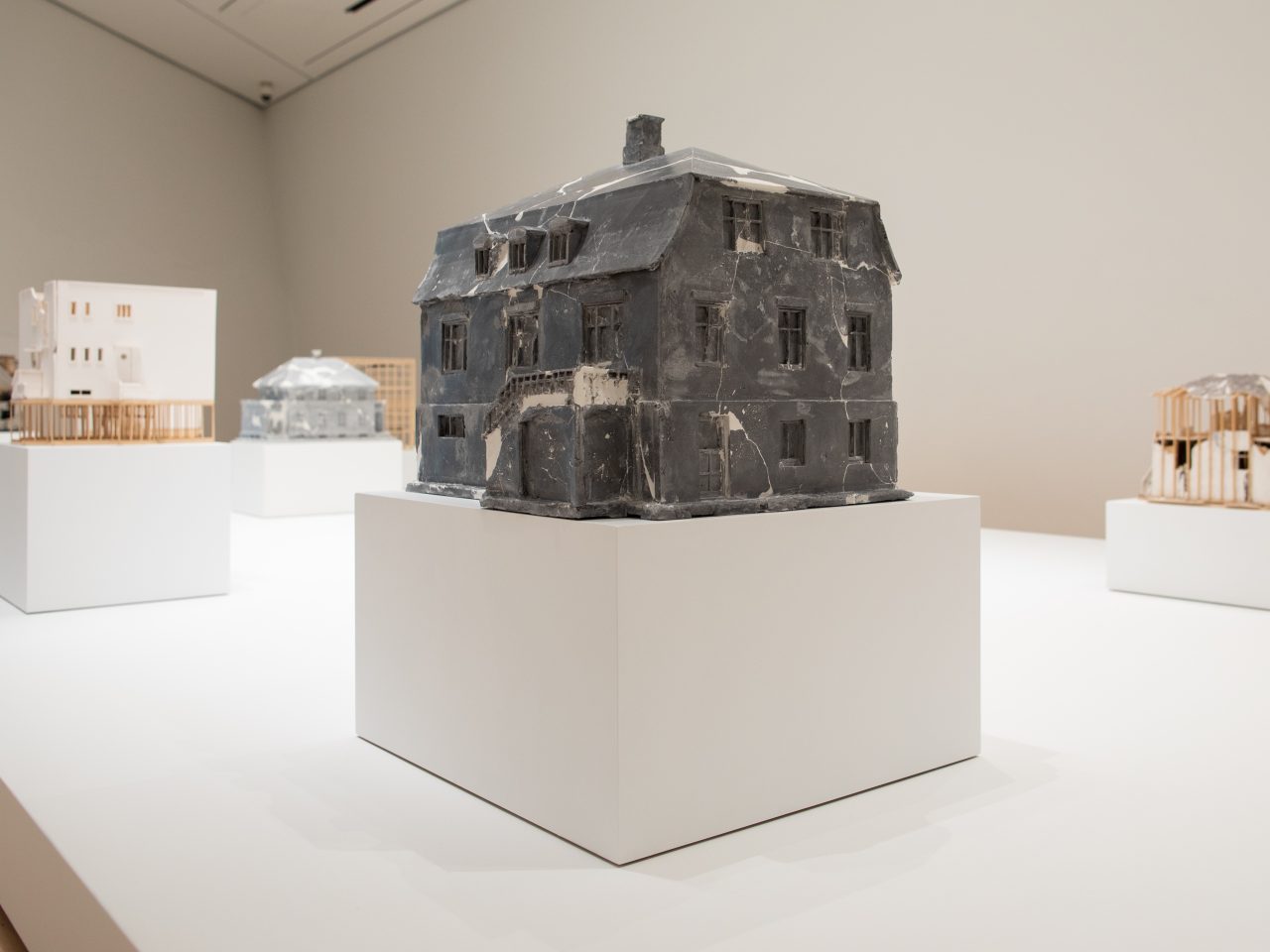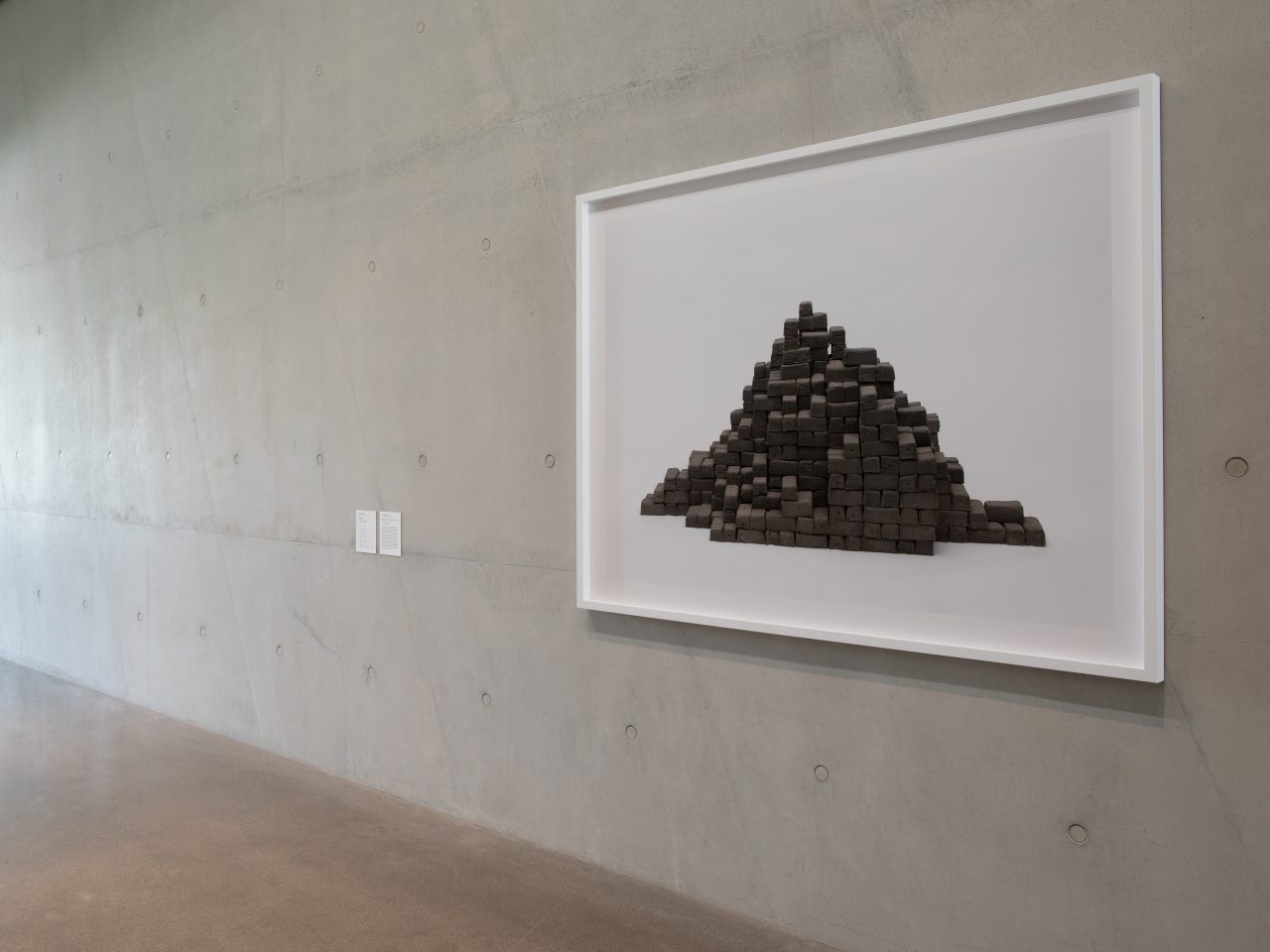Katrín Sigurðardóttir is organized by the Eli and Edythe Broad Art Museum at Michigan State University and curated by Steven L. Bridges, Associate Curator. Lead support for this exhibition is provided by a gift from Hari Kern. Additional support comes from the Eli and Edythe Broad endowed exhibitions fund. The work Metamorphic was commissioned by the San Francisco Art Institute with the support of The Harker Fund of the San Francisco Foundation.
About the Exhibition
Timely and timeless, the work of Katrín Sigurðardóttir explores the relationship of memory, distance, and time—an “archaeological” search for meaning, self and social awareness, while confronting the impermanence of all things.
The exhibition at the MSU Broad is a focused survey of the artist’s past fifteen years of production, drawing together three major sculptural projects that share a genealogical relationship: Unbuilt Residences (2005–15), Metamorphic (2017–present), and Namesake (2018–present). Collectively, these bodies of work employ various artistic processes of creation and transformation, thus imbuing the works with a sense of resilience and perseverance in their fractured, palimpsestic beauty. This will be the first exhibition to bring these different works together in conversation, expanding and reinforcing their evocative power, while also creating opportunities for further exploration and engagement.
One of the defining characteristics of Sigurðardóttir’s recent work is the conscious interplay between chance and intention in the creative process, between construction and cataclysm. This working methodology creates a poetic subtext for the objects produced, underscoring an appreciation for impermanence, vulnerability, and the beautiful yet entropic force of chance transformations. The implications of these (meta)physical processes also relate directly to the context of the exhibition, rooted in Michigan and the Midwest, connecting the local with global concerns around the precarity of contemporary life.
Further, through unexpected shifts in scale and dimensionality, Sigurðardóttir’s work opens up space for others to enter, to offer their own readings, recollections, and interpretations. A robust schedule of educational and programmatic efforts accompany the exhibition, expanding on the contents of the show to allow for greater accessibility, but also for other voices and perspectives to be included within.
